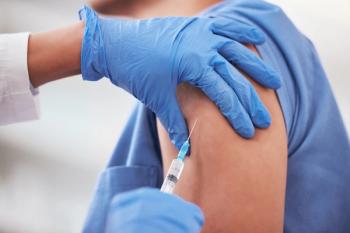
NIOSH to update hazardous drug list
NIOSH, the National Institute for Occupational Safety and Health, is updating its list of hazardous pharmaceutical products. The new list will become part of the organization's 2004 alert, Preventing Occupational Exposure to Antineoplastic and Other Hazardous Drugs in Health Care Settings.
"We had originally expected to update the hazardous drugs list annually," said Thomas Connor, Ph.D., research biologist in the NIOSH division of applied research and technology. "The review process turned out to be much more involved."
The original NIOSH alert lists more than 130 pharmaceutical products that pose workplace hazards, and Connor said the group is considering about 100 new candidates for the list. Most are drugs that have been approved for marketing in the United States since the summer of 2004. Some, like Paxil (paroxetine, GlaxoSmithKline) were on the market in 2004 but have since been found to pose potential occupational hazards.
The products proposed for inclusion on the hazardous drug list were scheduled to be posted on-line in mid-January. Connor said the list would be linked to the hazardous drug alert at http://
The list will be open for public comment for several months, Connor said, and it will be discussed at a public meeting in late spring or early summer. Connor said he expects about a third of the original 100 candidates to be added to the NIOSH hazardous drug list.
Reaction to the hazardous drug list has been mixed. But even pharmacists who find problems with the hazardous drug list stand behind the alert. "I believe in creating the criteria for evaluating hazardous drugs and letting people make their own choices," said Luci Power, senior pharmacist and manager of parenteral support services at the University of California San Francisco Medical Center. Power was largely responsible for the hazardous drug guidelines published by ASHP. She also helped draft the NIOSH hazardous drug alert.
ASHP does not support a list that itemizes hazardous drugs, Power added. The association has noted that a list of specific products that pose workplace hazards is always out of date. Power herself said that creating a list effectively dictates what products do and do not get used in specific settings. She has fielded numerous questions about the preparation and use of oxytocin.
"Yes, it's a hormonal, but it is probably not particularly dangerous," she said. "You need to look at the outcome when you make those kinds of decisions. When you have a list, people tend to look at the list and stop there." She also questions whether monoclonal antibodies and other large-molecule products belong on the list. Large proteins are very unlikely to enter the body unless injected or otherwise inserted directly.
"You could probably sit in the stuff and not get anything in you, absent a cut," she said. "Monoclonal antibodies are hazardous, but they are not a workplace hazard. Too many people do not recognize the difference."
The issue of hazardous drugs arose in the 1980s when Roger Anderson, then head of the division of pharmacy at the M. D. Anderson Cancer Center in Houston, found contamination in many pharmacy work areas. The result was workplace safety standards requiring biological safety cabinets (BCSs), caps, gowns, gloves, and other safeguards.
In the 1990s, Dutch toxicologist Paul Sessink found that caps, gowns, gloves, and BCSs were not enough. The admix process and drug administration also contribute heavily to environmental contamination. One result was the development of closed-system devices for the preparation and delivery of chemotherapeutics and other hazardous products. Carmel Pharma developed the first closed-system device, PhaSeal. Cardinal Health, ICU Medical, Teva, and other device makers have since entered the market, but a study presented at the ASHP meeting in Anaheim last December found that PhaSeal was the only device that did not emit visible plumes of material during testing.
Newsletter
Pharmacy practice is always changing. Stay ahead of the curve with the Drug Topics newsletter and get the latest drug information, industry trends, and patient care tips.






































































































































